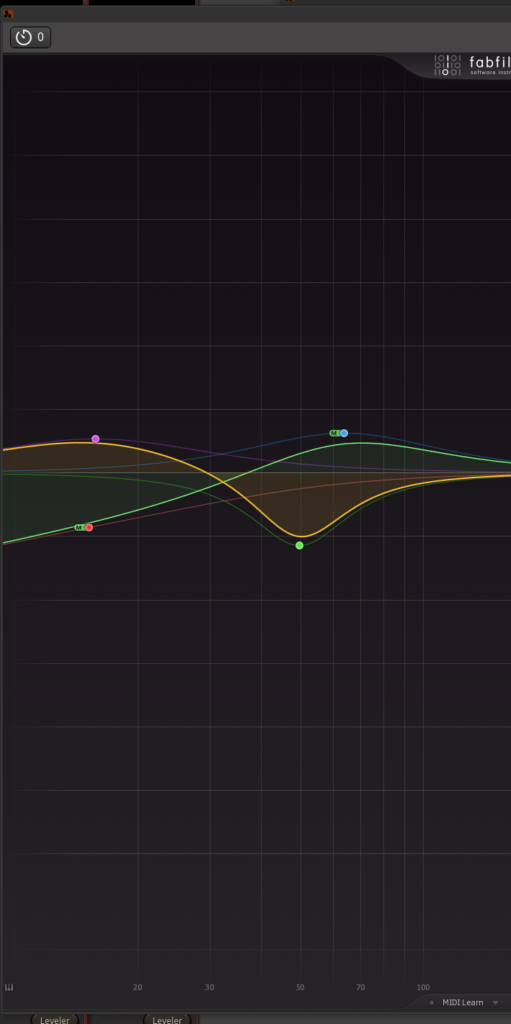In today’s music, the kick drum is one of the most important elements. It provides the foundation for the rest of the instruments to follow and can make or break a track. Learning how to fit your kick and bass together is a really important skill.
The kick drum sits in the same frequency range as the bass line, these two elements need to work together for your track to pump. That’s why it’s important to get your kick drums and bass lines working together perfectly, and that’s where EQ and compression come in. Both of these tools can be used to make space for the kick drum and bass line to work together perfectly.
Even science agrees – the co-author of a study from 2018, Dr. Sylvie Nozaradan, commented that their findings strongly suggest that the bass exploits a neurophysiological mechanism in the brain – essentially forcing it to lock onto the beat. I shit you not – https://neurosciencenews.com/bass-music-frequency-9703/
You literally need a solid low end for people to catch your groove.
Follow these steps every time and you’ll soon find you are nailing this all important area.
How To Use EQ to Make Space for The Kick Drum
If you read my previous blog about making space for your kick drums and have followed that tip, your Kick drum and bass line should already be working together. They should have a different centre frequency.
Even if your bass and kick are working together you can make some quick EQ moves to make them punch out.
The technique is very simple. All you need to do is identify the centre frequency of your kick drum and using your favourite EQ plugin, create a dip at that frequency in your bass channel (or even group bus)
You should start with a gentle dip of 2-3 db and gradual slope. Take a listen and see how it sounds. Adjust to taste.
Play around with both the amount you lower the frequency by and the Q width. If you’ve got good monitoring you’ll know when it’s right. Make sure you cross check with headphones in case your room has some bass issues (hint: most rooms do).
Generally if you make a deep narrow notch, it’s not going to sound very natural

Superimposed image of EQ settings for Bass and Kick to get a better low end
The image on the left shows an example of what the EQ’s for the bass and kick may look like. The green potentially the bass and the yellow potentially the kick drum.
You can go a bit further by pushing that frequency up a little bit on your kick drum channel – be careful no to overdo it though.
Create a bit more space for the bass line, by gently carving out some of the frequency above and below the centre frequency.
Once you’ve done that, you can repeat the process for the centre frequency of the bass line. This works better when your bass line returns to your tonic note frequently.
How To Use Compression To Make Space for the Kick Drum
Attack settings for Kick Drums
Using compression to shape the transient of the kick drum will help you get the sound to sit perfectly.
A slow attack with a longer release will let the transient pop through but bring down the body of the sound, making room for other elements.
Play with your attack time, till it sounds right. Make sure your release time is long enough to compress the body, but short enough so that the compressor has released before the next kick hits. Use this tool as a guide for your release time.
Then you can experiment with the ratio to see how far you want to push the rest of it down. Different songs will need different settings, so you should play to find out what works for your song.
Side-chain compression to make way for the Kick Drum
Side-chain compression is where you compress one signal based on the peak of another signal.
In this case you want to compress the bass when the kick drum hits.
Using a compressor with a side chain feature, set the compressor to feed the side chain with the signal from the kick drum.

This is the U-He Presswerk compressor which I own, it is a fantastic all round compressor.. Grab it here https://u-he.com/products/presswerk/
Start with a ration at around 2:1.Set a fast attack time and a fast to medium release time to start. Solo your kick and bass so you can listen to the effect. Experiment with these till you are happy with the result.
You can choose to have a more natural sound by keeping everything tame, or go more extreme for a pumping sound.
Tips for getting the perfect low end sound.
Some things to remember.
- Experiment with your compression settings – if it works, it works…
- Your low end doesn’t live in isolation always check how it sounds against the whole mix
- Your room isn’t perfect (well for 99.9% of people) and low end is the most problematic in most rooms so make sure you compare to references and check through multiple sets of speakers – If you have 2 sets of monitors that can help, but check in your car and your phone
- Don’t go crazy adding plugins – get it to sound balanced before you start to add some spice
- When you do add spice – do it on your group buss
- Adding a form of saturation (clipping, valve distortion, etc) to your bass will help it pop out of smaller speakers
- Always check your mix in mono and do it often
Wrapping up.
You need to have a powerful bass for most genres of music these days. Scientists are even establishing that it is the low end that helps us lock into the rhythm of a song.
By carefully applying some simple EQ and compression techniques you can get a better result. Repeat this often and you will nail it every time.
The flow really breaks down to
Steam Mastering Blog Community
Never miss a post, or a special offer
Make sure you get notified about our posts containing mixing techniques, mastering information, client success stories and occasionally receive a special offer.


